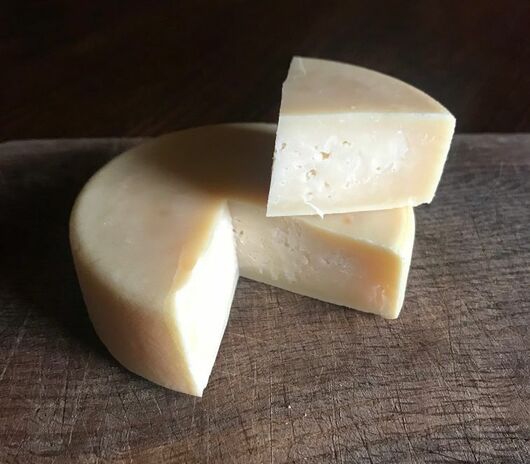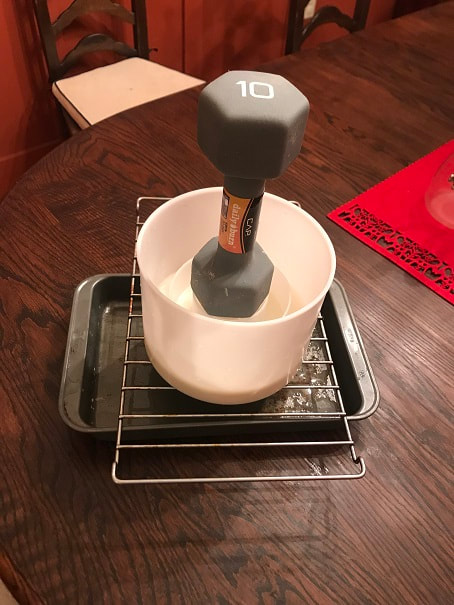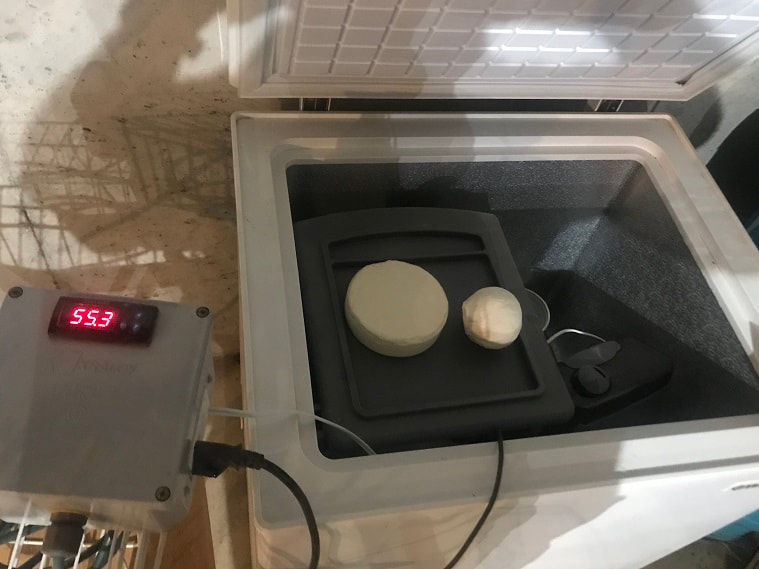Photo above: Vierwalderstattersee, Switzerland, April 2000
Making Emmentaler Cheese
This is a cheese from Switzerland that is great for fondue or sandwiches. My favorite use is to make fondue with it. Here's how to make it at home; enjoy!
STEP 1: Sanitize every pot, utensil, and surface in the work area, with star-san, or a bleach solution. Then gather up two gallons of whole milk (I used pasteurized and homogenized whole cows milk), Thermophillic B Culture, Propioni Bacterium, liquid calf rennet, and liquid calcium chloride. These ingredients are all available at a cheese making shop or online.
STEP 2: Warm 2 gallons of whole cows milk to 90 deg F. Heat slowly and stir occasionally so that it heats evenly.
STEP 3: Sprinkle 1/4 teaspoon of Thermo B culture on the milk , let it sit for 5 minutes, and then stir it in thoroughly and gently with a large slotted or perforated spoon.
STEP 4: Dissolve 1 teaspoon of propioni bacterium in a 1/4 cup of warm water, then stir this into the milk (again gently and thoroughly). This is the bacterium that will munch on the cheese and create gas that will create the holes in the cheese as it ages.
STEP 5: Let the milk sit for 10 - 15 minutes.
STEP 6: Dissolve 1/2 teaspoon of liquid calcium chloride in a 1/4 cup of water. Then gently stir this into the milk. Calcium chloride is added to improve coagulation of cheese that has been pasteurized. Pasteurization is tough on the milk and makes it harder for the rennet to coagulate the milk, the calcium chloride is added to pasteurized milk to aid in coagulation.
STEP 6: Dissolve 1/2 teaspoon of liquid calcium chloride in a 1/4 cup of water. Then gently stir this into the milk. Calcium chloride is added to improve coagulation of cheese that has been pasteurized. Pasteurization is tough on the milk and makes it harder for the rennet to coagulate the milk, the calcium chloride is added to pasteurized milk to aid in coagulation.
STEP 7: Dissolve 1/2 teaspoon of liquid calf rennet in a 1/4 cup of water. Then gently stir this into the milk. Rennet is found in the fourth stomach of calves, and it is what coagulates the milk, separating the milk into liquid whey and solid curds.
STEP 8: Let sit 50 minutes
STEP 9: Use a curd knife, (I use a pastry knife for this) to cut the curd into 1/4" pieces, and then stir gently for 5 minutes
STEP 9: Use a curd knife, (I use a pastry knife for this) to cut the curd into 1/4" pieces, and then stir gently for 5 minutes
STEP 10: Slowly raise the temperature to 120deg F over a 45 minute period of time. Stir occasionally for even heating. and to prevent any scalding on the bottom.
STEP 11: Strain the curds and drain the whey using cheese cloth in a colander. Line a 6" round Tomme cheese mold with cheese cloth, fill the mold with the curds, gently fold the cheese cloth over the top of the cheese (avoid excess folds of cheesecloth, as they will leave indentations in your cheese), and press at 8 lbs for 15 minutes. Whey will continue to drain.
STEP 12: Flip the mold upside down, gently tap on it so that the wheel of cheese falls down, flip the cheese over and put it back in the mold and press for 2 hours.
STEP 13: Flip the cheese inthe mold again, and press for 12 hours., Then remove the cheese wheel from the press and from the cheese cloth.
STEP 13: Flip the cheese inthe mold again, and press for 12 hours., Then remove the cheese wheel from the press and from the cheese cloth.
STEP 14: Make a bowl of near-saturated brine by dissolving 3 cups of cheese salt in 1 gallon of water. Then put the wheel of cheese in the brine for 12 hours
STEP 15: Let the cheese wheel sit in a cooler at 55 deg F for a week.
STEP 16: Let the cheese sit at room temperature for 20 days. A couple times a week, flip the cheese over and wipe it down with the salt brine. Scrub off any mold that forms on the surface of the cheese using the salt brine in cheesecloth.
STEP 15: Let the cheese wheel sit in a cooler at 55 deg F for a week.
STEP 16: Let the cheese sit at room temperature for 20 days. A couple times a week, flip the cheese over and wipe it down with the salt brine. Scrub off any mold that forms on the surface of the cheese using the salt brine in cheesecloth.
STEP 17: Age the cheese for 4 months at 55deg F and 85% humidity. I put a digital temperature controller on a chest freezer to control temperature, and I put a small humidifier in it to control humidity. I leave the lid of the freezer ajar 2". Flip the cheese over and wipe it down with salt brine twice a week. Scrub off any mold that forms on the surface of the cheese using the salt brine in cheesecloth.
STEP 18: Enjoy a handcrafted wonderful Emmentaler!















